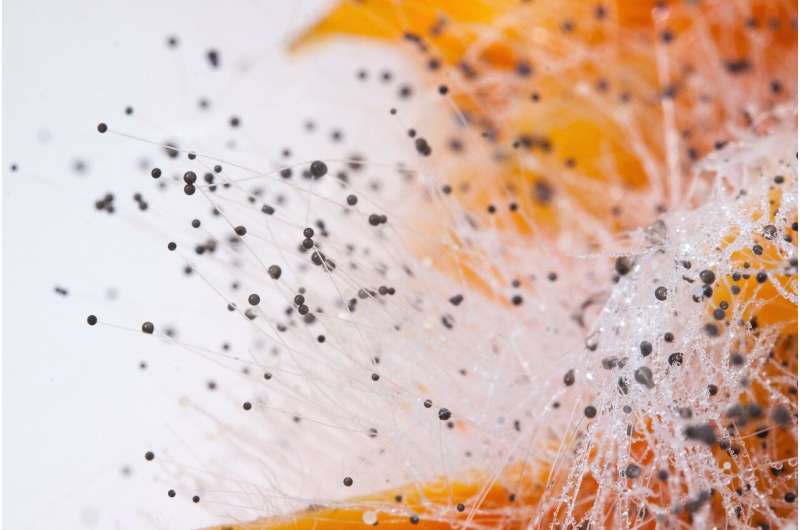This article has been reviewed according to Science X's editorial process and policies. Editors have highlighted the following attributes while ensuring the content's credibility:
fact-checked
trusted source
proofread
Eliminating mold after natural disasters is vital for those with mold allergy, says research

Severe weather events such as hurricanes, floods and extreme precipitation have increased in recent years and are projected to become more frequent. With those events can come a surge in growth of mold throughout houses and residences.
Two new studies being presented at the American College of Allergy, Asthma and Immunology (ACAAI) Annual Scientific Meeting in Anaheim, Calif. show the harmful health effects of excess mold on those with asthma, while also discussing methods for getting rid of mold and other airborne allergens in the most efficient way possible.
"Allergists routinely discuss avoidance of mold with their patients who test positive for mold allergy," said Amber Hardeman, MD, MPH, MBA, ACAAI member and lead author of the study. "We conducted a review of recent articles on flooding and mold exposure after natural disasters to assess the strength of evidence supporting common recommendations for mold remediation provided by physicians."
Said the authors, "Post-storm, local hospitals witness a nearly twofold increase in diagnoses related to mold exposure. Individuals with respiratory conditions like asthma, weakened immune systems, and allergies are most at risk. Those with asthma face a two times higher risk of death when mold counts exceed 1,000 spores/m3."
"A concentration of mold spores above 500 spores/m3 is considered high. In addition, concerns about mold exposure may lead to interventions such as bleach use, which can be more harmful than the mold itself. Allergists and other physicians should focus on recommending effective home drying methods and discouraging detrimental or expensive practices for patients exposed to mold."
In a second study, researchers at the iAIR Institute examined interventions to improve indoor air quality (IAQ), such as source control, monitoring, and the use of air cleaners and said they can significantly improve health outcomes, particularly for people with asthma and allergies.
"This study provides an update on state-of-the-art air cleaning technology to equip doctors to advise their patients," said Gráinne Cunniffe, Ph.D., lead author of the study.
"HEPA filters remain most effective in removing airborne particles, including allergens and fine particulate matter. Additionally, activated carbon filters were found to be highly effective in removing volatile organic compounds (VOCs) and odors. UV-based technology can be effective when used in filtered HVAC systems."
Air cleaners and ionizers that are ozone-producing were identified as technologies to consider cautiously as some have been shown to release harmful ozone gas. According to the authors, patients should also be encouraged to consider factors such as room size, cost, maintenance requirements, independent testing and third-party certification, and noise levels when selecting an air cleaner.
More information: Abstract P037: Health Consequences and Remediation of Mold Exposure Following Natural Disasters: A Scoping Review
Abstract P036: A Breath of Fresh Information on Air Cleaning Technology



















